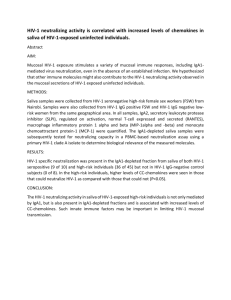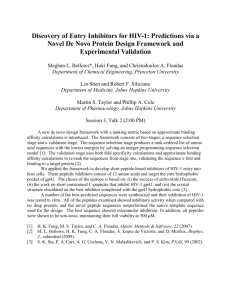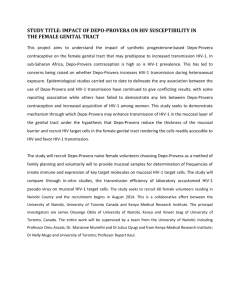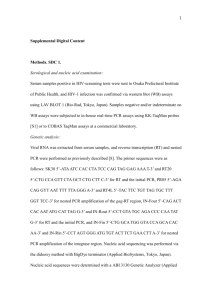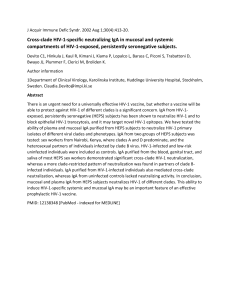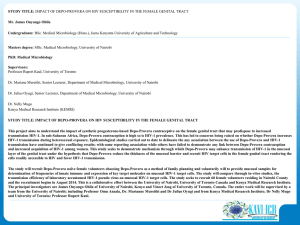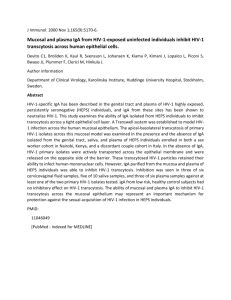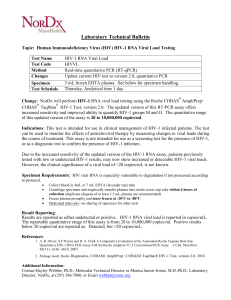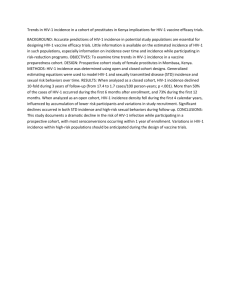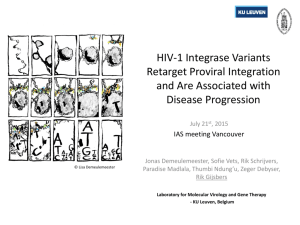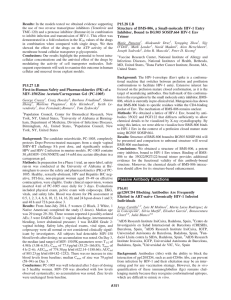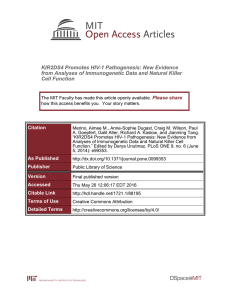NIH Summary
advertisement
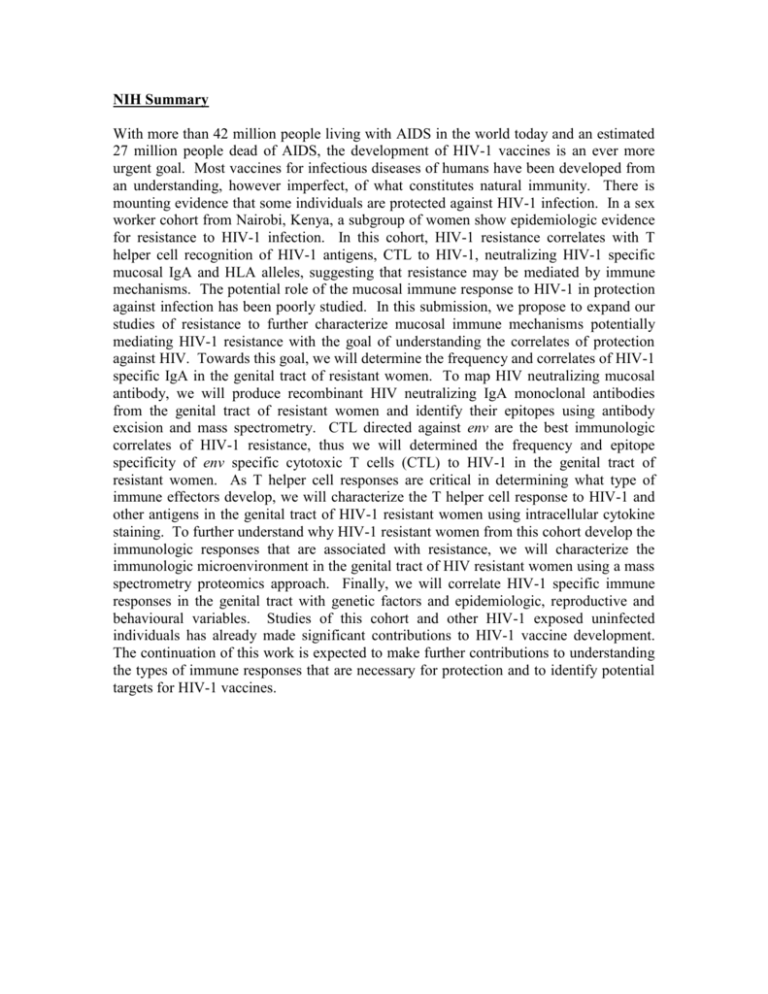
NIH Summary With more than 42 million people living with AIDS in the world today and an estimated 27 million people dead of AIDS, the development of HIV-1 vaccines is an ever more urgent goal. Most vaccines for infectious diseases of humans have been developed from an understanding, however imperfect, of what constitutes natural immunity. There is mounting evidence that some individuals are protected against HIV-1 infection. In a sex worker cohort from Nairobi, Kenya, a subgroup of women show epidemiologic evidence for resistance to HIV-1 infection. In this cohort, HIV-1 resistance correlates with T helper cell recognition of HIV-1 antigens, CTL to HIV-1, neutralizing HIV-1 specific mucosal IgA and HLA alleles, suggesting that resistance may be mediated by immune mechanisms. The potential role of the mucosal immune response to HIV-1 in protection against infection has been poorly studied. In this submission, we propose to expand our studies of resistance to further characterize mucosal immune mechanisms potentially mediating HIV-1 resistance with the goal of understanding the correlates of protection against HIV. Towards this goal, we will determine the frequency and correlates of HIV-1 specific IgA in the genital tract of resistant women. To map HIV neutralizing mucosal antibody, we will produce recombinant HIV neutralizing IgA monoclonal antibodies from the genital tract of resistant women and identify their epitopes using antibody excision and mass spectrometry. CTL directed against env are the best immunologic correlates of HIV-1 resistance, thus we will determined the frequency and epitope specificity of env specific cytotoxic T cells (CTL) to HIV-1 in the genital tract of resistant women. As T helper cell responses are critical in determining what type of immune effectors develop, we will characterize the T helper cell response to HIV-1 and other antigens in the genital tract of HIV-1 resistant women using intracellular cytokine staining. To further understand why HIV-1 resistant women from this cohort develop the immunologic responses that are associated with resistance, we will characterize the immunologic microenvironment in the genital tract of HIV resistant women using a mass spectrometry proteomics approach. Finally, we will correlate HIV-1 specific immune responses in the genital tract with genetic factors and epidemiologic, reproductive and behavioural variables. Studies of this cohort and other HIV-1 exposed uninfected individuals has already made significant contributions to HIV-1 vaccine development. The continuation of this work is expected to make further contributions to understanding the types of immune responses that are necessary for protection and to identify potential targets for HIV-1 vaccines.
